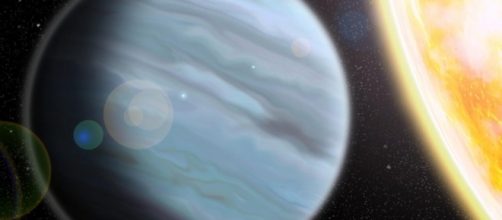A new study that was published in the 'Astronomical Journal', described in detail a new and strange exoplanet. This planet, called KELT-11b, is being called a "Styrofoam" Jupiter. A team of researchers from around the world, but primarily led by those from Lehigh University, Ohio State University, and Vanderbilt University, authored the study.
What is KELT-11b?
KELT-11b is an exoplanet that is around 320 light-years away from Earth. It is in the category of so-called "hot Jupiter" planets that scientists have discovered outside our solar system. These are planets that are physically similar to Jupiter but are in close proximity to their stars, have high surface temperatures and have very short orbital periods.
KELT-11b is around 40 percent larger than Jupiter, the largest planet in our solar system. It also has an orbit extremely close to its sun, as it can complete one revolution in less than five days. In comparison, Jupiter takes 12 years to orbit around the sun. Mercury, the fastest planet in our solar system, takes 88 days to do so. However, none of these factors are what is causing researchers to be intrigued by the planet.
KELT-11B's 'Styrofoam' density
Despite the enormous size of KELT-11B compared to Jupiter, its mass is only around a fifth that of Jupiter's. The Earth mass, unit of mass equal to that of Earth, of Jupiter is 317.83. This would make KELT-11B's Earth mass about 63.566, which would put it closest to Saturn at 95.2 Earth mass for a comparison.
This makes the planet about as dense as Styrofoam, with the addition of having an exceptionally giant atmosphere. This is according to Lehigh University's Joshua Pepper, lead author of the study. KELF-11B has the third-lowest density out of every planet that has been discovered so far.
How the planet's host star helped researchers
The host star of KELT-11B, named KELT-11, is exceptionally bright. This enabled researchers studying the planet to make an accurate measurement of the properties in KELT-11B's atmosphere. These observations will enable the creation of tools that will be able to distinguish different gases in the atmospheres of planets outside of our solar system.
These tools will become even more important once next-generation space telescopes start to join the fray. These advanced telescopes will enable astronomers to start discovering and learning even more about exoplanets.


